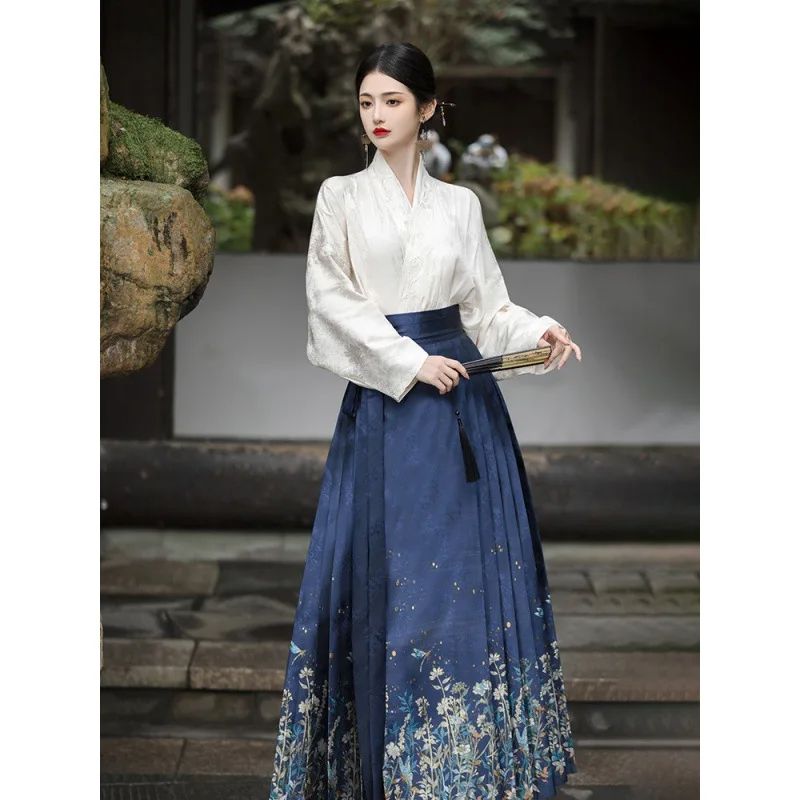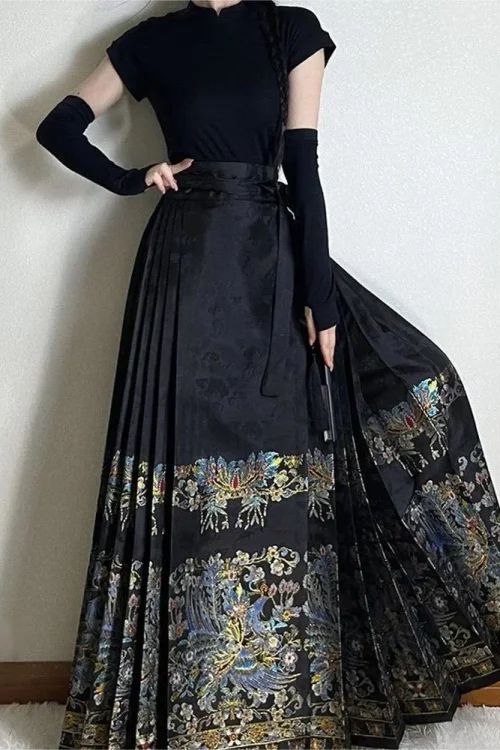Ma Mian Qun: A Symbol of Chinese Mythology
Ma Mian Qun, a mythical creature in Chinese folklore, holds profound significance in the realm of Chinese mythology. Its name, literally translating to “Horse-Faced Qun,” encapsulates its unique physical attributes: a human body adorned with the head of a horse.
The Role of Ma Mian Qun in Mythology
Ma Mian Qun is often depicted as a guardian of the underworld, tasked with escorting the souls of the deceased to the afterlife. In this role, it serves as a symbol of the transition between life and death, guiding the departed on their final journey. The horse’s head, with its long mane and flowing tail, represents the swiftness and agility with which Ma Mian Qun traverses the realms of the living and the dead.

Embodiment of Justice and Retribution
Beyond its role as a guardian, Ma Mian Qun also embodies the concept of justice and retribution. It is said to possess the ability to discern the sins and virtues of the deceased, ensuring they receive fair judgment in the afterlife. Its horse-like features, with their keen eyesight and sharp teeth, symbolize its ability to see through deception and punish the wicked.
Association with the Ten Courts of Hell
In Chinese mythology, Ma Mian Qun is often associated with the Ten Courts of Hell, where it serves as a judge and enforcer of divine law. Its presence in these courts underscores the belief in a just and orderly afterlife, where the actions of the living are held accountable.

Kulturelle Bedeutung
The symbolism of Ma Mian Qun extends beyond its mythological significance. In Chinese culture, it has become a popular motif in art, literature, and folklore. Its image can be found in temple murals, sculptures, and traditional paintings, serving as a reminder of the interconnectedness of life, death, and the divine.
The Origins and Evolution of Ma Mian Qun
Ma Mian Qun, literally translated as “horse face skirt,” is a traditional Chinese garment worn by women during the Qing dynasty (1644-1912). It is characterized by its distinctive shape, which resembles a horse’s face, and its intricate embroidery.
Historical Background
The origins of Ma Mian Qun can be traced back to the Ming-Dynastie (1368-1644), when it was known as the “horse face robe.” However, it was during the Qing dynasty that the garment reached its peak of popularity and became an essential part of the Manchu women’s wardrobe.
Symbolism of the Kleidungsstück
The shape of Ma Mian Qun is unique and symbolic. The horse’s face represents strength and vitality, while the skirt symbolizes fertility and prosperity. The garment is typically made of silk or satin and is decorated with elaborate embroidery, often featuring flowers, birds, and other auspicious motifs.

Cultural Significance of Embroidery
The embroidery on Ma Mian Qun is not merely decorative but also carries cultural significance. The choice of motifs and colors reflects the wearer’s social status, marital status, and personal preferences. For example, unmarried women often wore skirts with bright colors and floral embroidery, while married women preferred more subdued colors and auspicious symbols.
Decline and Revival
In the 20th century, Ma Mian Qun gradually fell out of fashion as Western clothing became more popular. However, in recent years, there has been a revival of interest in traditional Chinese garments, and Ma Mian Qun has once again become a symbol of cultural heritage and pride.
Today, Ma Mian Qun is still worn by some Manchu women on special occasions. It is also a popular choice for performers in traditional Chinese dance and opera. The garment’s unique shape and intricate embroidery continue to captivate audiences and serve as a reminder of the rich cultural traditions of China.
Ma Mian Qun in Modern Culture and Folklore
Ma Mian Qun, literally translated as “horse-faced skirt,” is a mythical creature deeply rooted in Chinese folklore and modern culture. Its origins can be traced back to ancient Chinese mythology, where it was depicted as a malevolent spirit that haunted the living world.
Evolution in Folklore
Over time, Ma Mian Qun evolved into a more complex figure, embodying both fear and fascination. In traditional Chinese folklore, it is said to be a horse-headed, human-bodied creature with a long, flowing skirt. Its face is often described as pale and gaunt, with piercing eyes and a gaping mouth filled with sharp teeth.

Supernatural Powers and Associations
Ma Mian Qun is believed to possess the ability to control the dead and summon them to its aid. It is often associated with death and misfortune, and its appearance is said to portend impending doom. In some regions of China, it is believed that Ma Mian Qun can be appeased by offerings of food and drink, while in others, it is considered a harbinger of evil that should be avoided at all costs.
Influence on Modern Culture
In modern Chinese culture, Ma Mian Qun has become a popular subject of art, literature, and film. It has been depicted in countless paintings, sculptures, and movies, often as a symbol of the supernatural or the unknown. The creature’s unique appearance and enigmatic nature have made it a captivating figure for artists and storytellers alike.
Beyond its folkloric and cultural significance, Ma Mian Qun has also found its way into popular culture. It has been featured in video games, anime, and manga, where it is often portrayed as a powerful and fearsome adversary. The creature’s enduring popularity is a testament to its enduring appeal and the enduring fascination with the supernatural in Chinese culture.
In conclusion, Ma Mian Qun is a multifaceted figure in Chinese mythology, embodying concepts of transition, justice, and the supernatural. Whether as a mythical creature or a traditional garment, Ma Mian Qun continues to captivate and inspire across generations.
